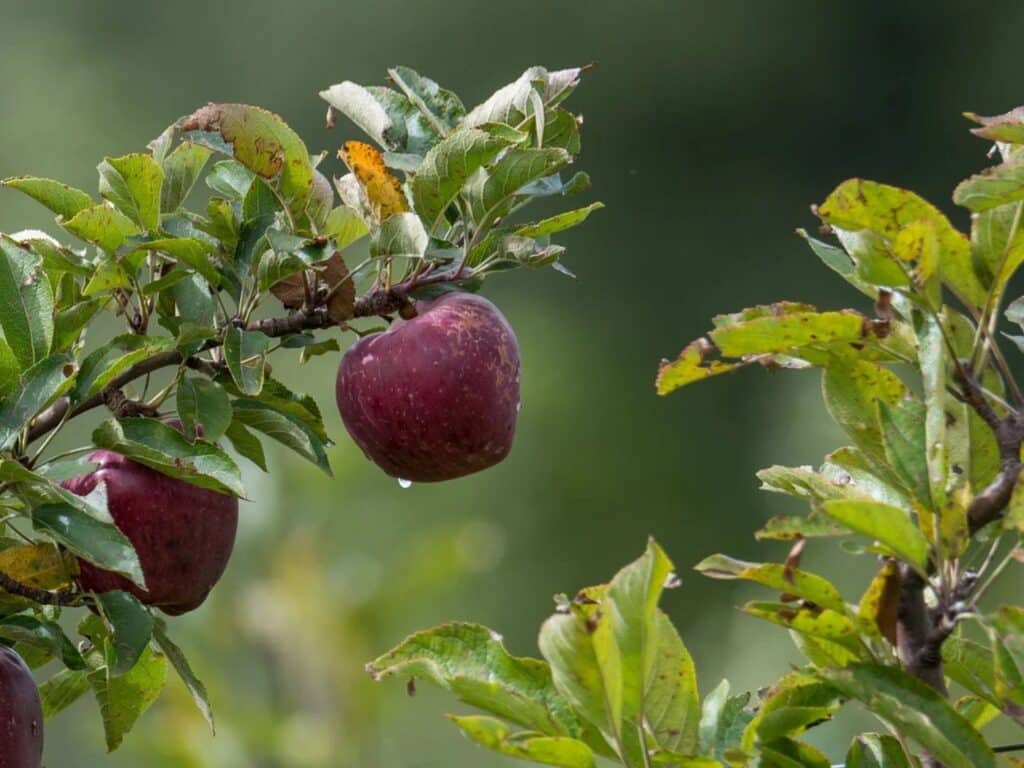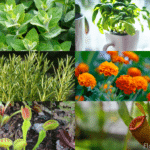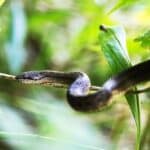Ever looked at your apple tree and noticed yellow spots marring the lush green of the leaves? It’s a sight that can cause any gardener’s heart to sink. The health of your tree is crucial, not just for the quality of the apples, but also for the overall aesthetics of your garden.
Understanding what causes these yellow spots and how to treat them can make the difference between a thriving, healthy apple tree and one that’s struggling.
So, if you’re noticing yellow spots on your apple tree leaves, you’re in the right place. Dive in, as we explore this common issue and provide you with the knowledge you need to keep your apple tree at its best.
Understanding Yellow Spots on Apple Tree Leaves
The Symptoms of Leaf Discoloration
Recognizing the symptoms of leaf discoloration requires a careful eye. Commonly, you’ll observe a gradual color shift in the leaves, from healthy green to a pale, sickly yellow. This transition often happens in clusters, rather than across the entire leaf surface.
Sometimes, it’s only a few spots present, manifesting as small yellow circles. Other times, this discoloration may spread across the entire leaf body, making it harder to ignore.
Causes of Yellow Spots
Digging into the causes of yellow spots on apple tree leaves, it’s important to mention that infections, pests, and nutrient deficiencies often stand at the roots of this problem. Fungal pathogens like apple scab or cedar-apple rust could be responsible, infecting the leaves and causing yellow spots to appear.
Alternatively, pests such as aphids or mites, which suck out the leaf’s essential nutrients, may well be the culprits. It’s not uncommon to see this discoloration when there is a deficiency in necessary nutrients, especially nitrogen. Evaluating your apple tree’s environment and caring practices can shed light on these complexities, leading you towards an effective course of action.
In each case, spotting the issue early and responding promptly can prevent the acceleration of this issue, preserving your apple tree’s health, and maintaining a vibrant garden landscape.
Diagnosing the Issue

Knowing the issue is half the battle against apple tree diseases. Therefore, a detailed understanding of common diseases and nutrient deficiencies that cause yellow spots is vital.
Common Diseases Leading to Yellow Spots
Apple trees are vulnerable to a range of diseases that manifest as yellow spots. These include fungal infections like Apple Scab, and bacterial infections such as Fire Blight.
- Apple Scab, caused by Venturia inaequalis, starts as small olive-green spots that eventually turn yellow and coalesce.
- Fire Blight, a bacterial disease triggered by Erwinia amylovora, often leads to a “burned” appearance, with leaves turning yellow before taking on a scorched look.
Remember, accurate identification of the disease is essential, and it’s beneficial to consult a local extension service or expert arborist if you’re unsure.
Nutrient Deficiencies and Environmental Stress
Aside from diseases, nutrient deficiencies often contribute to yellow spots on apple tree leaves. For example, a lack of essential minerals like nitrogen, iron, or magnesium manifests as leaf discoloration or yellowing.
- Nitrogen deficiency turns leaves pale green before they turn yellow, with older leaves affected first.
- Iron shortage, often due to high soil pH, results in yellowing between the veins of new leaves.
- Magnesium deficiency tends to affect the lower, older leaves first, with yellow spots appearing around the leaf edges.
Environmental stress, including inconsistent watering, poor soil condition, and inadequate sun exposure, can also induce leaf yellowing. Thus, optimal tree care practices become imperative in maintaining apple tree health.
Treatment and Management
You’ve learned about the causes of yellow spots on apple tree leaves. Let’s move on to discuss various treatments and management strategies.
Chemical Treatments for Diseases
By correctly diagnosing the disease, you can apply appropriate chemical treatments. For example, applying fungicides helps combat Apple Scab. Similarly, antibacterials effectively treat Fire Blight.
By spraying infected trees during cooler weather or early in the growing season, you mitigate disease spread. It’s also important to follow product instructions explicitly to ensure the safety and efficacy of chemical treatments.
Organic Remedies and Prevention
Complementing chemical treatments, organic remedies also play a significant role in managing yellow spots. Introduce natural predators like birds and beneficial insects to control pests.
Spraying neem oil or introducing fungal fighting microbes helps to suppress fungal diseases. Additionally, regular composting and organic mulching improve soil health, in turn aiding disease prevention.
Improving Tree Health and Resilience
Apart from the treatments, focusing on the overall health of the tree helps bolster its resilience against diseases. Regular watering, balanced fertilizing, and annual pruning contribute to a healthy apple tree.
Additionally, monitoring the tree for signs of stress or disease allows for timely intervention. By implementing these steps, you can ultimately prevent yellow spots on apple tree leaves, maintaining a healthy and productive apple tree.
Preventative Measures

Regular Monitoring and Maintenance
When dealing with apple tree health, vigilance is your prime tool. Annually inspect the foliage for the earliest signs of yellowing. Noticing changes, such as puckered, curled, or small yellow-bordered spots, denotes the onset of fungal infections or pest activity.
Where there’s one infected leaf, others may soon follow. Removing affected leaves and pruning tree limbs contributes to preventing the spread of diseases and infestations. Swift action diminishes potential complications in the future.
When pruning, take care to cut just above the bud on the tree branch. This practice promotes new healthy growth while retaining necessary tree resources. Do this activity in late winter or early spring when trees are still dormant. Late pruning can expose fresh cuts to disease organisms prevalent in warmer seasons.
Best Practices for Apple Tree Care
Optimal apple tree care relies on maintaining a balanced environment. Regular watering is essential but avoid waterlogging the soil which can lead to root rot. Drip irrigation ensures the water reaches the roots without causing leaf moisture, preventing fungal buildup.
Nitrogen, phosphorous, and potassium, known as NPK values in fertilizer, support leaf, root, and fruit development respectively. Understanding the tree’s nutritional needs and using a suitable fertilizer helps in preventing nutritional deficiencies that may cause yellow spots. Apply balanced all-purpose fertilizers in the growing season, but refrain from overly fertilizing, which can lead to lush but softer, disease-prone growth.
Mulch around the base of the tree serves multiple functions. It retains soil moisture, controls weed growth, and contributes to a well-drained, fertile environment conducive to healthy tree growth. Avoid piling mulch against the trunk, though, as it can promote rot and provide a home for pests.
All these measures help in preventing yellow spots on apple tree leaves and maintaining apple tree health. The crux lies in being attentive, adopting timely actions, and cultivating a well-rounded care routine for your apple trees.
FAQs
What causes yellow spots on apple tree leaves?
Yellow spots on apple tree leaves often signify issues such as infections (like apple scab, pests) and nutrient deficiencies. Common diseases such as Apple Scab and Fire Blight, and environmental stressors can contribute to leaf yellowing.
Why is early detection critical in addressing yellow spots on apple tree leaves?
Early detection lets the gardener act swiftly to prevent disease spread, by performing appropriate interventions such as leaf removal, pruning, and addressing the root cause of the problem, thereby protecting the health and productivity of the apple tree.
What preventative measures can be taken to avoid yellow spots on apple tree leaves?
Preventative measures include regular tree monitoring, early detection of issues like fungal infections or pests, and swift intervention. Further, proper pruning techniques, balanced watering, using proper fertilizers, and mulching for soil moisture retention and weed control can help prevent yellow spots on apple tree leaves.
How can diseases like Apple Scab and Fire Blight be controlled?
Often, controlling these diseases involves removing any infected leaves and branches immediately, using suitable fungicides, and maintaining good hygiene standards in your garden to prevent disease spread.
How does balanced watering and mulching help prevent leaf yellowing?
Balanced watering helps prevent root rot, while mulching aids in soil moisture retention and weed control. Both practices contribute to a healthier apple tree and can help prevent leaf yellowing.
Up next:







